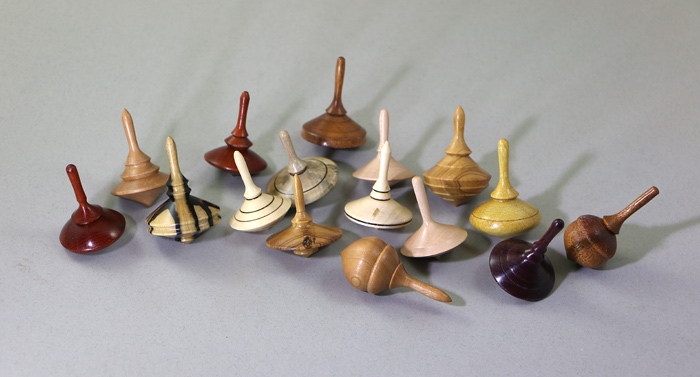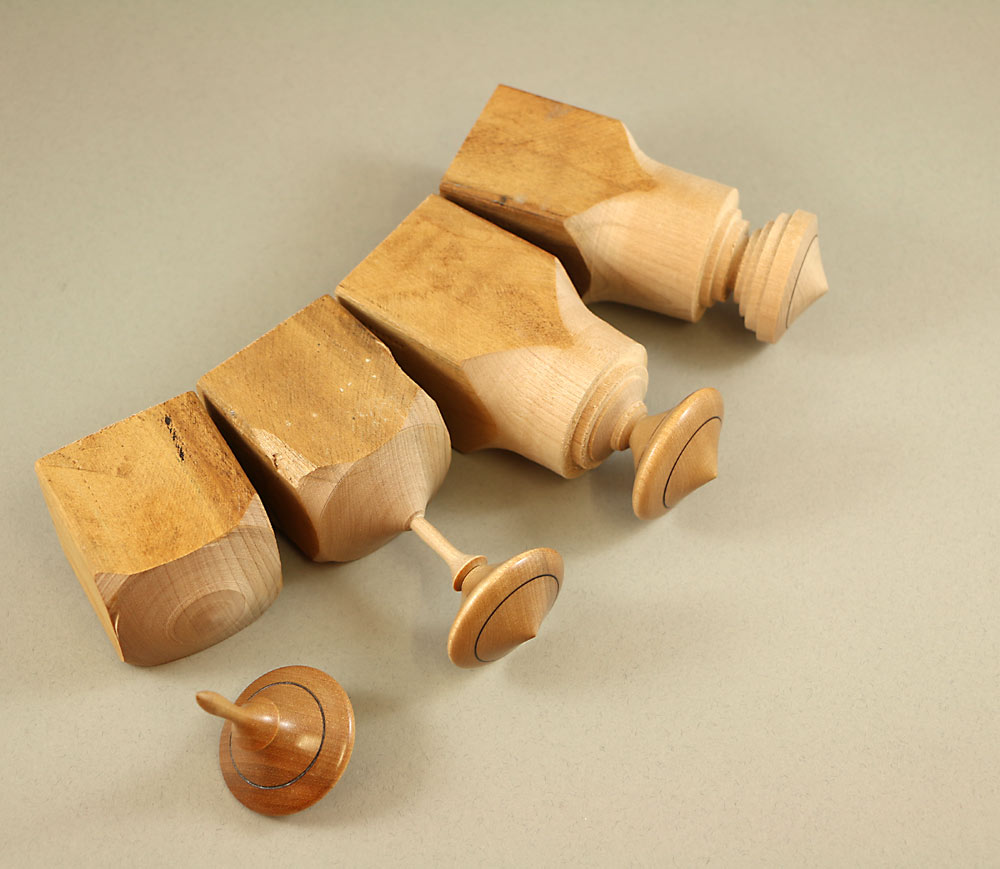first after lathe face shield best with pressure like the Trend next and most importantly cbn wheel and sharpening system then break the bank with tools cole down the list.Just me 2 cents from experience like yours.
first after lathe face shield best with pressure like the Trend next and most importantly cbn wheel and sharpening system then break the bank with tools cole down the list.Just me 2 cents from experience like yours.
A lot of good advise for sure. I agree, I have a set of Cole jaws but don't use them. I guess I should sell but I seem to hoard tools. As soon as I started using my vacuum chuck the Cole became obsolete to me.
Pete
* It's better to be a lion for a day than a sheep for life - Sister Elizabeth Kenny *
I think this equates nicely to wood turning as well . . . . .
Thanks to all that have responded Another question:
I've now turned a number of pine 2 x 4 pieces (cut to 1.5 x 1.5") and it acts just like you would expect cheap pine to act. It has been fun and a good chance to work with the roughing gouge, spindle gouge and the last piece I turned round and made beads with the skew. I just took a piece of split pecan from the wood pile and cut it "somewhat" square on the bandsaw. It isn't completely straight or 4S. I assume that as long as I have it between centers and start slow, there is no reason not to play with this? If I am about to put my eye out or otherwise create havoc, please let me know. The piece is NOT symmetrical even after the bandsaw. Thoughts?
The wood doesn’t have to be symmetrical or even centered! In fact intentional off-axis turning is popular. You are right to use a low speed at least when starting. Spindle turning is quite safe; a problem and the wood usually just falls away, unlike a heavy bowl blank that can ruin your day (or life). Of course, always wear safety glasses or other eye protection.
One thing I always recommend: if practical, hold one end of the blank firmly in a chuck, with the other end either held with the live center or not held at all, depending on the length and diameter. This may require a few extra sets of jaws. I keep chucks with jaw sets (always mounted) that will let me grip almost any diameter, such as the Nova 35 and 45mm jaws, various pin jaws, and a few others. I could check which I find the most useful if you’d like, probably later this week. (There are some other good ways to hold spindles for turning, maybe a topic for another day.)
When I turn small things like these small finger tops I might use a long enough blank to make two or three without the tailstock.

BTW, if you haven’t tried them, finger tops are a good turning exercise AND great for gifts. I always take some when I travel and have met some wonderful people through them.
I made these years ago to illustrate the basic procedure:

I turn, sand, and apply finish in stages since once you get to the handle you can’t go back and touch the earlier parts. You might think to just turn out the other way, handle first, but for several reasons the I prefer this way.
Pine can be wonderful turning wood, but I usually prefer hard, fine grained wood. If turning small things, even relatively expensive exotic woods are affordable.
If the blank is straight and square it can be held securely with four-jaw chucks. But if the wood is “somewhat” or not even remotely square I usually start by holding it between centers (you can test different center positions rotating by hand before committing) then turn a tenon on one end to fit your jaws. Holding one end adds both security and minimizes vibration from flexing, especially with thin spindles.
JKJ
Last edited by John K Jordan; 07-20-2022 at 10:06 PM. Reason: typos
John has as usual provided excellent advise and information. I would echo his comments!
Pete
* It's better to be a lion for a day than a sheep for life - Sister Elizabeth Kenny *
I think this equates nicely to wood turning as well . . . . .
So I should be OK turning between centers on the headstock spur until I whittle it down sufficiently for a tenon that I can chuck? Just be careful and stand to the side while spinning up?
Yes, you should be good doing as you describe. I realize you are just starting and are looking at a ton of accessories to buy. A face shield should be high on your list, as others have mentioned. John mentioned safety glasses but a full face shield is offers much better protection. You can get a reasonable good one for about $20. A much better quality face shield is the one pictured. This one was about $35 and has a replaceable shield.
Also the face shield is useful when sharpening tools, I use mine while ripping boards on table saw ,,or using chain saw. Get one!
I agree, I have 4 or 5 face shields and offer them to students and visitors when turning boxes, bowls, platters, and larger spindles.
This girl is turning a lidded box from a rather chunky blank. The box came out nice!
Attachment 483111 Attachment 483112
This visitor from Italy wanted to make a large ring keeper from heavy, exotic wood. A face shield seemed appropriate.
Attachment 483110
But for thinner spindles, I wear safety glasses mostly to keep dust out of my eyes. In thousands of spindles I've never even had one bump me if it broke - it just falls away. Most of mine are small diameter, usually from 2x2, 1x1 or smaller and sometimes 12-14" long. If encountering a hidden defect while turning a thin spindle, the tool is between me and the wood so if the wood breaks it tends to fall away from me. A thin spindle But I can see how a larger spindle blank might bounce around a bit if pried off the lathe with a big catch.
The real danger from a lathe is the amount of energy stored in the rotating wood, a function of the mass, the diameter, and the rotational speed - that's why a heavy bowl or platter blank can be quite dangerous if it comes apart or is pried out of the chuck. But a thin spindle has relatively little energy, even when turned at high speeds, so I always safety glasses or goggles. Same with the bandsaw - it's doesn't throw projectiles like a table saw so I wear safety glasses.
For some other shop activities, not wearing a full face shield is insane! Grinding steel: always. Drilling metals and sharpening tools: a good idea. The worst is wire brushing, especially on a bench grinder - the short needle-like steel wires often break loose and shoot out radially at high speeds - oops, embedded right in the eye ball. A face shield is recommended when working with toxic chemicals, especially those that can burn skin or eyes. I have a couple of full-face 3M respirators with good poly-carbonate shields and cartridges made for chemicals.
Another good but off-topic use for a full face shield: working with a wild llama! Contrary to what some believe llamas don't spit at people unless they are tormented. I had a wild one once that came with a tick on her nose. She was so terrified of being constrained it took me days to get a rope around her neck and then put a halter on her so I could work on her. Spit, spit, spit! (Llama spit is a blast of regurgitated 1/2 digested stomach contents. A full face shield kept the nasty stuff off my face!)
JKJ
Don't spend a dime on woodturning equipment/tools/accessories until you have joined a nearby woodturning club. Talk to club members. Woodturners are known for information sharing. Visit a club member's shop. Most will allow you to try their setup. Many clubs have mentors that will gladly help you out in your woodturning journey. Patience on the front end will be handsomely rewarded when you setup your woodturning shop.
PS - I speak from experience. I have owned two bandsaws, two drill presses and two of many woodturning tools/accessories because I ran headlong into woodturning before pausing to learn from club mentors. - J
Last edited by John King; 07-21-2022 at 11:58 AM.
Thanks! The face-shield arrived today and is now in use.
Dont forget to tip your garbage handler. You turners make a lot of dust/chips
Your initial question was about adequacy of a lathe in terms of size and weight. If you are convinced that turning is a long-term interest then I would say that buying the best lathe you can afford is a good idea, especially with regard to swing capacity and overall weight (although there are ways to make any lather heavier). However, I began turning and decided that I spend a much lesser amount before determining whether I really wanted to do a lot of turning long-term (being a long-time woodworker who made furniture and cabinets, etc.) The Nova Comet II served me for about 3 years before I decided that turning was something that I really wanted to do. During that time I turned a lot of bowls (no spindles as I have no interest in spindles), all the way up to close to the lathe's 12" capacity. Mind you, I'm not recommending Nova lathes, just size to try out the whole thing. After 3 years, I moved up to a Powermatic 3520C, which I would never regret. The PM lathe would allow me to do anything I want, but it is also over 700 pounds and hardly ever even vibrates. So, long term weight and capacity are important.
As for cole jaws, I have a set and used them frequently when I used a recess in the bottom to hold the blank and with smaller bowls. With larger bowls, it's much harder to secure them to work on the bottom than with small bowls and now, I can't remember the last time I used them. So, for larger pieces, I wouldn't recommend them.
As for chucks, I have several Nova chucks but I'd say the only reason I have them instead of another brand, is because the G3 chuck came with my Nova Comet lathe. When I moved up to the Powermatic, I thought seriously about changing but had enough invested in Nova jaw sets that I decided to just buy a larger Nova chuck. There is nothing wrong with them but I think there are better chucks out there. I'm sure others have their own recommendations. Almost all Nova chucks require adapter collars to match the 8X1 1/4" thread, but it's not a big deal. I have all my chucks adapted to my Powermatic so they all work.
My best advice is to think things through like you're doing at every step. Turning, like most woodworking, can be very expensive. So, when buying chucks or tools, buy them sparingly and, before buying more, use the ones you have until your needs change or you feel you need an upgrade.
I'm not sure "where" exactly you are in your entry to turning, but at some point I would suggest this.
Go practice,
turn simple things,
learn how to sharpen,
work on tool presentation,
understand grain direction when turning,
practice,
make slightly more complex items,
learn basic shapes, like beads, coves, hollows and swells,
practice,
turn the simple things again,
look at your progress
I think you get the point